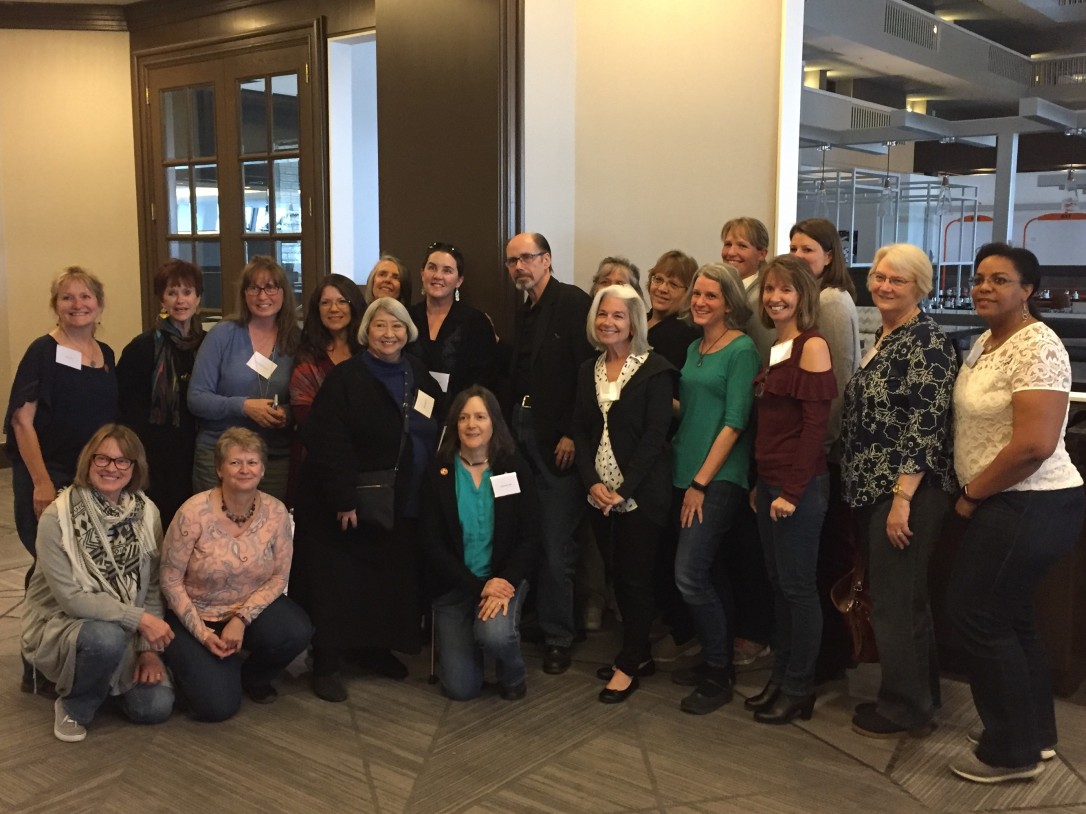
Is there anything more intoxicating than being in a room full of motivated writers? If there is, I can’t think of what it would be.
This past weekend I was fortunate to attend a writing workshop in Denver, Writing Commercial Fiction, by Jeffery Deaver, hosted by Rocky Mountain Chapter Mystery Writers of America, and Rocky Mountain Fiction Writers. This was my second time I was blessed to learn from him, the first being at the Colorado Gold Writer’s Conference. What a talented, generous, wonderful man!

The five hours were packed with useful information, no fluff, no time wasted.
He started with general rules of writing fiction which included:
Define your goal as a writer, remember your mission, writing fiction is a business, adopt the mint-flavored business model (as an author it’s our job to give the reader a pleasant experience, mint vs liver-flavored toothpaste), the subject of your story and what it should be about, plan your book or story ahead of time (he’s a huge advocate of outlining and research and completely convinced me to put more time into each), and know your craft (from style, prose, grammar, punctuation, syntax, the publishing market, and technology). He touched on being aware of your shortcomings, the importance of rewriting, continuing your education via classes and conferences, that rejection is a speed bump and not a brick wall (something we can all benefit from to remember) and take your time in all aspects of writing. Hurrying the process will only result in a lesser quality piece of written work.
From there he spent time on the four elements of a story:
Plot – Continually introduce conflicts. Every scene needs to raise questions. Aim for the WOW! factor. He suggested holding off on answering those questions as long as possible. Unresolved anticipation is good, but never leave a conflict, clue, or subplot unanswered. Every question needs to be answered at the end of the book and every clue resolved. He talked about adding subplots, humor, and even a few fun facts. He explained the importance of using plot reversals and how to energize the middle of the book. I was surprised (pleasantly so since I’ve always struggled with the 3-act structure) that he doesn’t believe in the 3-act structure but rather a linear structure with a series of ups and downs. He talked about the need for surprise endings, that your twists need to have consequences, and the necessity of creating risks for your characters by incorporating physical threats, death, or a loss of something, whether it be love, friendship, a career, or any other loss that’s significant to a character. He touched on using the Goldilocks principle when incorporating research–not to little, not too much, but make sure it helps the story and furthers the reader’s understanding.
Characters – It’s good to have a protagonist with flaws but s/he needs to be likeable, don’t create passive characters, observe people constantly to make your characters better, give them quirks and tics, the best way to reveal a character (telling the reader directly, describe the appearance, thoughts, and feelings, using dialogue, through the character’s actions, and through others reactions). And we can’t leave out that even the villain needs to be a little likable. Shoot for compelling characters instead of interesting.
Setting – The setting is essentially another character but less important than plot and character. The plot should be developed first, then populated with characters, then setting comes into play. He stressed the importance of doing your research on settings. Boots-on-the-ground research is best, but if that isn’t possible, use the Internet.
Dialogue – Don’t over explain during dialogue, write as if someone is talking (use contractions and break the rules of grammar), match the characters with their dialogue, and when using a dialogue attribution “said” and “asked” are best.
This is only a brief explanation of topics covered. Each section was chock full of information, suggestions, examples, and personal stories. And when I asked if I could record his presentation, he was kind enough to allow it. That’s generosity, folks! His passion for his profession is hugely contagious. (How’s that for the ole ly adverb?)
Numerous members of my Sisters in Crime-Colorado writing group attended as well. (I’m third from the right with the cut-out shoulder shirt). To say it was beneficial to us as writers is an understatement. If he’s ever presenting at a conference/workshop in your area, I highly recommend any and all writers to attend. You won’t be sorry. It will be a mint-flavored experience!

And now it’s back to Camp NaNo where I have a manuscript vying for my attention.
Write on. Have a beautiful week!
The difference between the almost right word and the right word is really a large matter. ’tis the difference between the lightning bug and the lightning.
― Mark Twain, The Wit and Wisdom of Mark Twain
